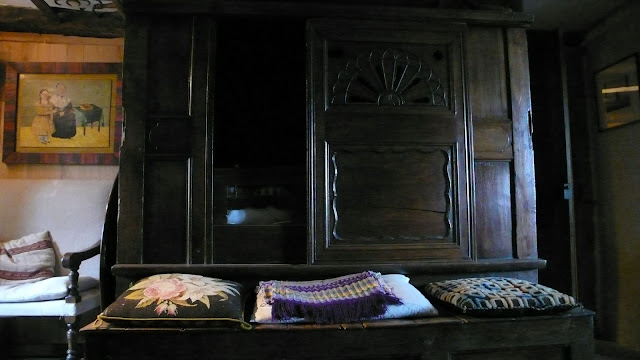It was during the winter of 2014/15 when out in Western
Australia that I stitched the first small flock of sheep on tweed. Between the
soaking windswept crofts of Lewis and the parched stubble outback of south west
Australia there would seem to be no possible connection and yet sheep manage to
thrive in these most extremes of climate. In the extreme heat of the day and in
what seem like impossibly dry conditions sheep gather beneath a lonesome gum
tree with heads bowed close to the ground, while out on the Hebrides the
Scottish black face sit tight up against whatever shelter they can find as the
prevailing north westerly storms bring lashing rain. The oldest recorded sheep
in the world was in Australia and at 23 years of age it died of heat stroke. On
the Isle of Lewis in the village of New Tolsta John A Maciver discovered one of
his sheep bore an ear tag which indicated it was 24 years old. The ewe had gone
missing out on the moors for several years and had become wild and very weary
of humans. She was accepted back into the fold still with a good set of teeth
but during handling lost one of her rather fragile horns. During a violent
winters storm while grazing near the cliff edge she was blown into the sea
which seemed as fitting an end as heat stroke was in Australia.
I started stitching on the long haul flight to WA and
completed a small flock during my three month stay and the reaction from
friends was so positive that I was encouraged to frame them up for sale.
During
an exhibition in 2017 in the Victoria Gallery in Bath the small flock of twelve
all sold and since then these folk art textile images have continued to sell.
As with all forms of artwork each unique rendition continues to evolve with
additions of flowers, crofts houses, light houses, ships and even wind
turbines. The images have also become more complex with more than one sheep or
a lamb and ewe and with the additional work comes an increase in price. Down
south in galleries they were retailing framed at £265 while from my studio I can
sell them without commission for £185.
Next year’s flock of sheep on tweed are taking shape. It is
rare for me to follow a line of creative production for long but in the case of
the sheep on tweed they have proven amusing as well as saleable.
Being stitched
entirely by hand means each sheep is unique and while I give little thought to
the complexity of any particular image I am now compelled to start pricing them
on an individual basis which takes account of the hours entailed in their
production. Up to now they have been set at a uniform £185 each but next year I
expect there will be some around £250 plus. Time is always a sensitive point
when dealing with labour intensive work and while I consider myself to be a
more than competent embroiderer I am not prepared to debase that work simply to
produce a more affordable object or to accept less than the minimum hourly
rate. Each images is crafted to the best of my ability and many contain an
element of experimentation and discovery which give them their folk art charm.
The sheep in this latest series are contained within a landscape that evokes
island life whether that be simply the proximity to the sea with boats and
light houses, the traditional shielings and habitation, or the more recent
visual impact of the wind turbines. Thanks to the very generous donations of
tweed off-cuts by local weavers the backgrounds have become an equally important
part of the finished product. Over the next couple of months I will turn to
making the frames and hope by lambing time to have a further 20 for sale.






















































